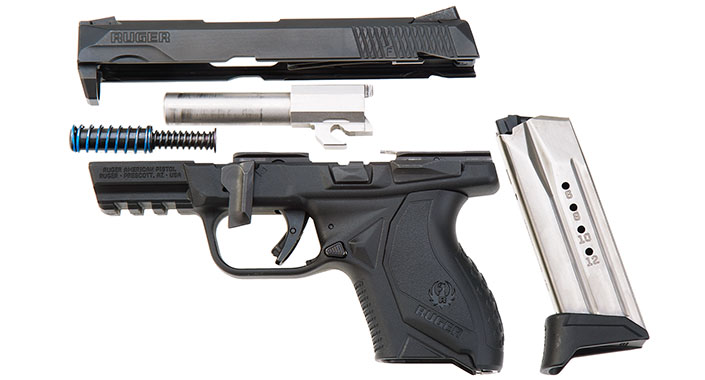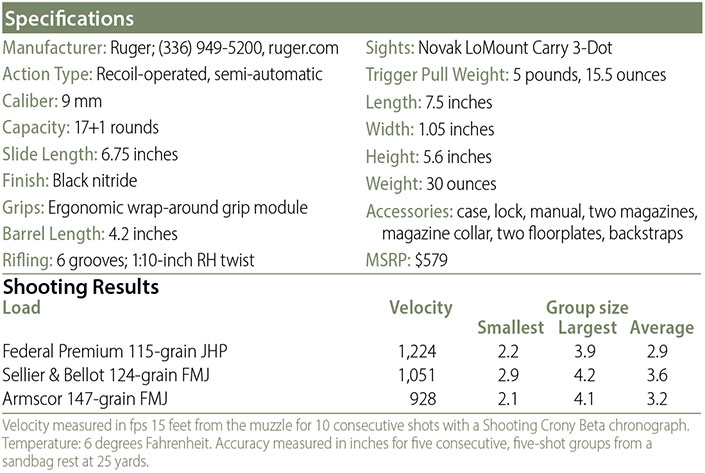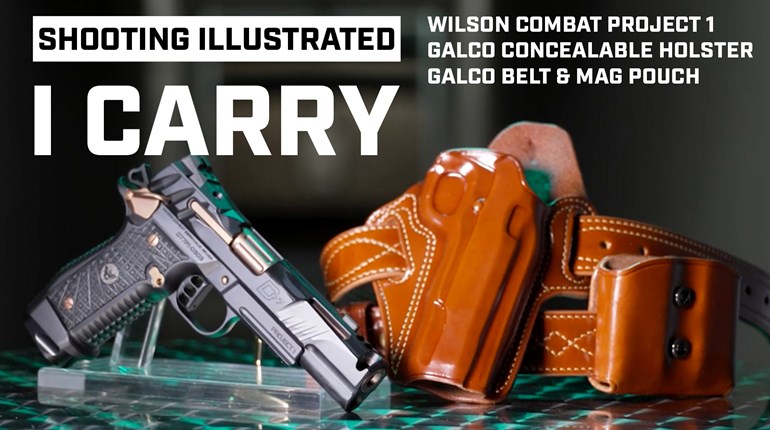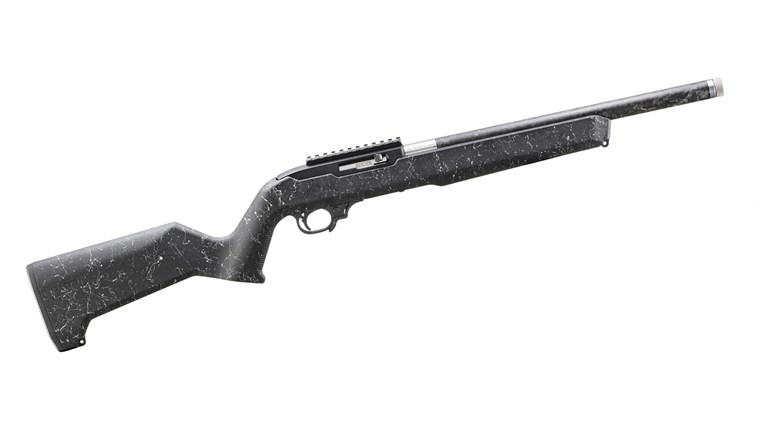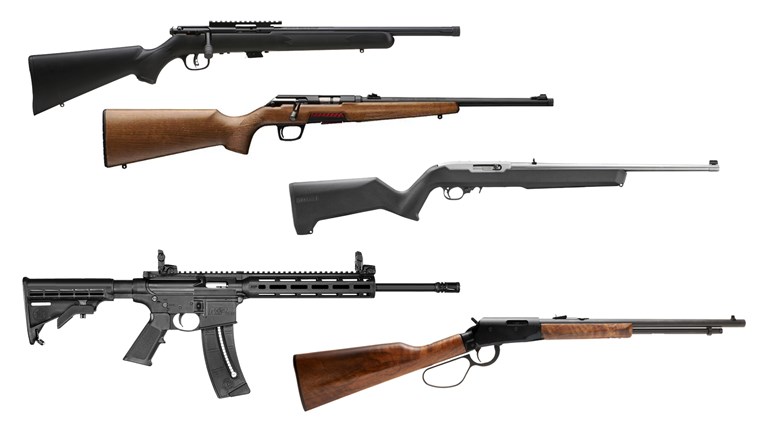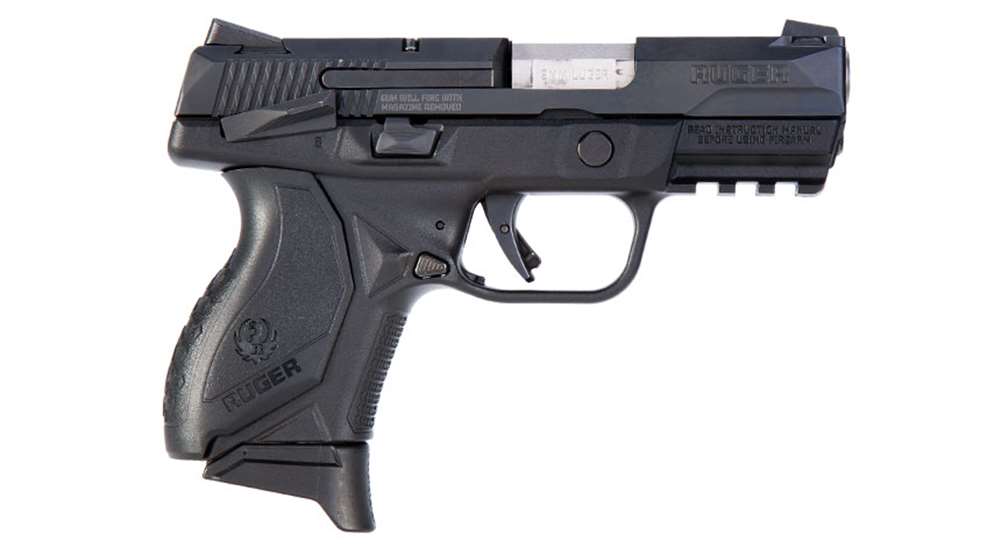
Ruger got its start in the centerfire semi-automatic pistol business in the early ’80s with a pistol designed with an eye toward military and law enforcement sales. While it never got adopted by the military and didn’t wind up in a ton of police holsters, the Ruger “P-series” autos were rugged, reliable and reasonably priced.
A ton of these pistols were sold over the course of 20 years, and it was the first centerfire service-caliber semi-automatic of many a shooter on a budget, including yours truly (a stainless .40-caliber KP91DAO, actually). A more crowded pistol market, lack of a true compact model in the era of the rapid spread of Shall-Issue CCW laws and the popularity of striker-fired pistols led to the P-series’ eventual replacement in the catalog with the striker-fired SR series.
Now, the SR is joined in Ruger’s catalog by the American pistol, launched in 2015 in full-size 9 mm and .45 ACP variants, and late last year by the subject of this review, the Ruger American Compact 9 mm. Like the original Ruger P-series, the American was designed with an eye toward military and law enforcement sales. In fact, although withdrawn from the Joint Combat Pistol testing, the pistol meets all the demanding requirements of that specification.
The American Compact’s size is dictated by the fact the American series uses the increasingly common system of a metal “chassis,” which forms the frame rails and contains the lockwork, sitting inside a replaceable plastic frame. This chassis carries the serial number and, from a legal standpoint, is the actual firearm.
It uses the same chassis as the full-size model, which means that the frame could only be made so short. Hence the 12-shot 9 mm American Compact slots size-wise between 10-shot subcompacts and more traditional 15-shot compact guns of the Glock G19/SIG Sauer P320C ilk.

The pistol ships with one 12-round magazine that comes with two floorplates: a flush-fitting one and one with a pronounced pinkie extension for a full four-finger grip. Also included in the sturdy plastic case is a 17-round magazine from the duty-size American, fitted with a removable plastic “collar” that blends the magazine with the short grip when attached. In a dramatic improvement in ergonomics over the equivalent setup on the Ruger SR9C, the extended mag and grip adapter on the American will eject smoothly and without fouling.
Magazines are ejected with an easily reached, ambidextrous magazine-release button. In fact, all controls on the American Compact are ambidextrous—except for the takedown lever. The slide release and thumb safety are replicated in mirror image on both sides of the pistol.

The slide release is easily activated with the thumb but surrounded by enough of a raised plastic “fence” on the frame that I never had issues with either inadvertent activation or failures to lock open caused by fouling it with a thumb while shooting in a hurry. The thumb safety, on models so equipped, is better thought out than that on the SR series as well, falling easily under the thumb on the draw stroke and not at all like an afterthought.
The pistol ships with three wraparound backstraps, in sizes small, medium and large. The grips are easily exchanged with the quarter-turn of a supplied Allen wrench and with the medium grip on the gun, the circumference around the trigger and backstrap is only 6.75 inches, which is slightly smaller than both the Smith & Wesson M&P 9C and Ruger’s own SR9C.
The trigger features a Glock-type safety tab in the interest of drop safety; Ruger’s in-house drop-testing regime is more rigorous than either California DOJ or SAAMI require. Despite meeting these rigorous drop-test protocols, the trigger on the test sample broke at 5.75 pounds consistently and with a predictable rolling break after a clean takeup and a minimal “wall” at the end.
The one I used at Ruger’s press event at FTW Ranch held up through a one-day class with Dave Spaulding, where we burned easily half a case of ammo or more without any malfunctions. The test gun I received from Ruger had ejection issues with a very lightly loaded batch of 115-grain CCI Blazer right out of the box, but other than that it has gone through exactly 627 rounds of assorted FMJ and JHP ammo with aplomb. With more aftermarket accessories appearing by the week and priced very aggressively against the competition, the Ruger American Compact looks like it could be a sales success, offering a name-brand price and performance for those on a store-brand budget.
